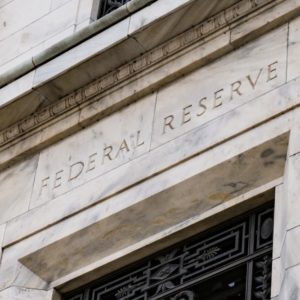In May 2003, President George W. Bush took to the deck of the aircraft carrier USS Abraham Lincoln to declare that the “mission had been accomplished” in Iraq. He did so only for the country to find itself bogged down in Iraq for a bloody decade or two with little to show for its efforts.
Fast-forward to today, and we find that the Federal Reserve is about to do something similar to what Bush did. On March 11, it is set to allow the Bank Term Funding Program (BTFP) to expire. By so doing, it effectively says that its mission to stabilize the banking system in the wake of the Silicon Valley Bank failure last March has been accomplished. With fresh strains emerging in the banking system and every sign that a slow-motion commercial property train wreck has begun, the Fed risks looking as foolish as President Bush by prematurely declaring victory in resolving last year’s banking crisis.
Last March, the Fed was forced to introduce its massive liquidity program to stabilize the banking system after the failure of First Republic Bank and Silicon Valley Bank. Those failures were the second- and third-largest U.S. bank failures. They occurred because uninsured depositors questioned the solvency of the banking system after realizing that the banks had suffered large mark-to-market losses on their bond portfolios due to the Fed-induced spike in interest rates.
The more than $100 billion in liquidity provided under the BTFP program succeeded in curbing what threatened to be a generalized run on the banks. However, it did not resolve the underlying solvency problems that caused uninsured depositors to fear for their deposits. It also had the unintended consequence of inviting the banks to arbitrage the system to $50 billion.
The banks did so by taking advantage of the fact that they were charged lower interest rates on their borrowing under the program than the interest rate they could receive on their deposits at the Fed.
One reason to be concerned about the recurrence of another round of the regional bank crisis is that the banks are now nursing even larger mark-to-market losses on their bond portfolios than before. Last year, when the Silicon Valley Bank failed, it was estimated that the banking system’s mark-to-market losses were $600 billion. However, that was when the 10-year Treasury bond rate was significantly below 4 percent. Now that the Treasury bond rates are meaningfully above 4 percent, those losses are all greater.
An even bigger reason for concern is the slow-motion train wreck that is well underway in the commercial property sector. This has to be of particular concern, considering that the regional banks have around 18 percent of their total loan portfolio exposed to commercial property lending.
Morgan Stanley forecasts office prices could fall by at least 40 percent from their 2022 peak. They could do so due to record-high vacancy rates in the aftermath of the changed working and shopping habits after COVID. This means lenders will have to absorb losses in excess of $1 trillion. It also makes it difficult to see how property developers will manage to roll over the $1.5 trillion in property loans set to mature over the next two years at considerably higher interest rates than originally contracted.
Adding to these problems is that the Fed’s high-interest rate policy is causing a sharp spike in auto loans, student loans and credit card loan delinquencies. This would seem to make a perfect storm for the small and medium-size banks.
A recent National Bureau of Economic Research Study forecast that 385 regional banks will fail due to their troubled loan portfolios. This suggests that it is not a question of if another round of the regional bank crisis will occur. Instead, it is a question of when that will happen. When it does happen, the Fed will be forced to make another swift policy U-turn to provide the banks with liquidity. That will hardly do any good for the Fed’s already tattered credibility.

